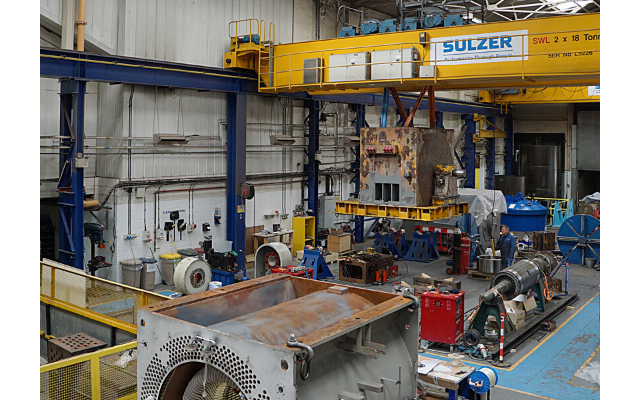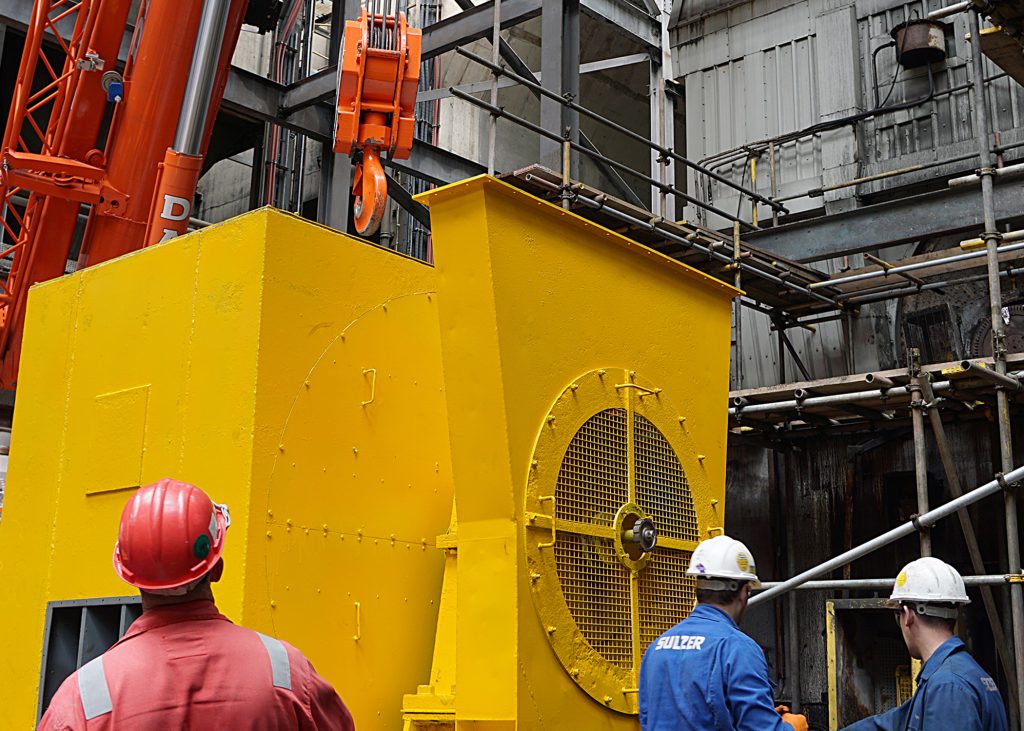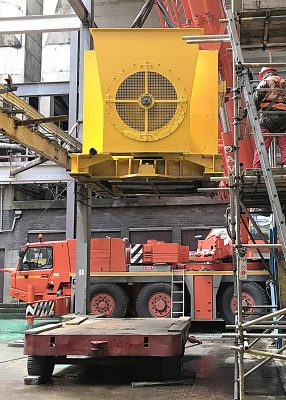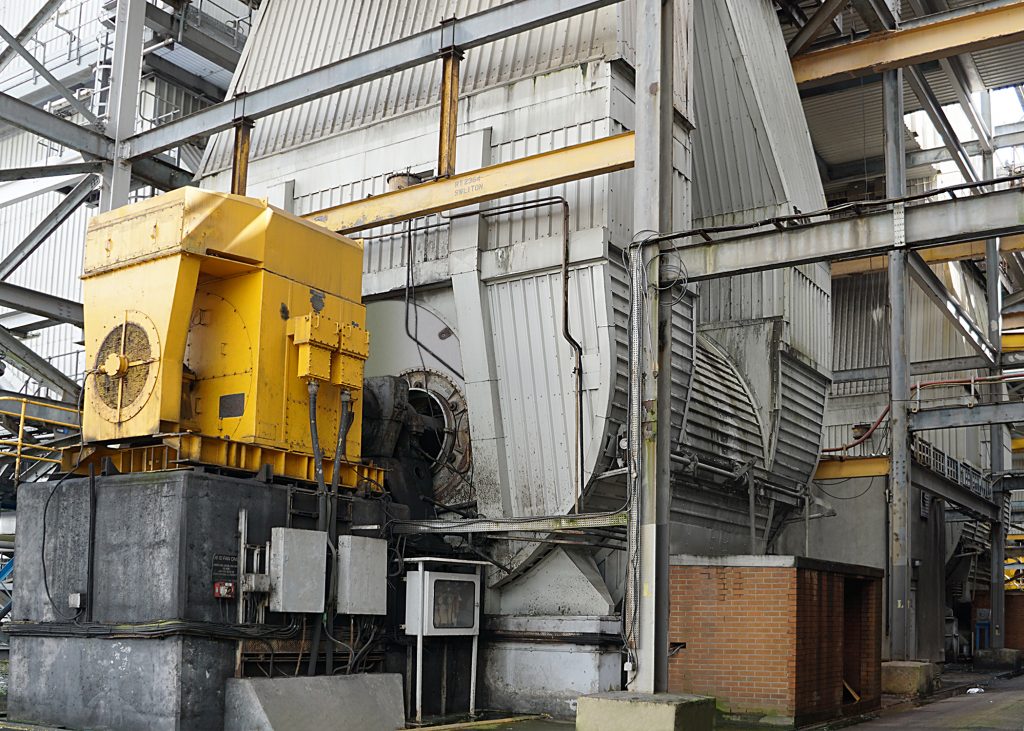Contributor: Sulzer
Power station fan motor repairs exceed expectations
Routine maintenance is essential for the continued reliability of machinery, even when it is used infrequently. For a power station in Wales, the induced draft (ID) fan motors are scheduled for maintenance every ten years and sometimes the inspection can reveal some unexpected issues. Fortunately, Sulzer had delivered motor repairs in the past for this site and was able to provide a comprehensive repair and installation including realignment.
More and more coal-fired power stations in the UK are being taken off full-time operation and only used during periods of peak demand in a drive to reduce carbon emissions. As a result, the machinery and equipment is used less frequently but it must still be ready for operation when the demand for energy rises.
A program of routine maintenance minimizes the risk of breakdown by completing any repairs during planned outages that will not affect the ability of the power station to meet demand.
In this example of the importance of routine maintenance, a pair of ID fan motors was removed from service to check their overall condition. ID fans are used at the outlet of the boiler system to exhaust the flue gases, creating a negative pressure in the furnace; their reliable performance is essential to furnace efficiency.
On-site support
As the leading independent provider of maintenance solutions for rotating equipment, Sulzer had already developed a working relationship with the power station and was contracted to complete the inspection and repair of one of the motors. The second motor was replaced with a spare unit and held for inspection at a later date.
Sulzer has a network of service centers throughout the UK and in this case the Avonmouth Service Center took the lead for the repair and sent a team of field service engineers to the site. Jamie Watt, Site Supervisor for Sulzer, explains: “These motors use a 3.3 KV supply and produce 1.4 MW of power to drive the fans.
“The motor and bedframe alone weigh 23 tonnes along with an additional 15 tonnes for the fan and the ductwork. The scale of the equipment required us to use a 100-tonne crane to assist with the removal process and allow the motor to be loaded for transport to the service center.”
Communication is key
The initial inspection of the motor found that electrically it was in good shape, passing all the insulation resistance tests for both stator and rotor. However, mechanically there were several issues that required attention, including a considerable amount of sheet-metal work that needed to be replaced.
Greg Sandy, Electrical Works Manager for Sulzer at the Avonmouth Service Center, comments: “From the outset, a continuous dialogue was established with the power station to advise on progress in the project and explain any changes to the original repair program. Sulzer uses critical path analysis to ensure that all the different aspects of the repair project are completed as efficiently as possible, minimizing the overall project timeframe.
Sharing the load
Inspection of the stator revealed that all the windings would need to be re-wedged, while the stator frame was very corroded and needed to be cleaned and repainted. The new wedges were manufactured in-house and the repair team worked around the clock to remove and replace the original coil wedges.
Meanwhile, the rotor bearing journals needed to be polished and the coupling journal was badly worn. This was machined before spiral weld was applied and then machined to nominal dimensions with a new key-way.
At the same time, the white metal bearings were re-surfaced and the bearing housings were refurbished. These were found to have been poorly repaired in the past and had different sized bolts holding them in place. The housings were machined, fitted with inserts and equipped with new retaining hardware.
Final alignment
Once the components had been fully refurbished, the motor was reassembled and the faulty auxiliary components, such as the tacho and some of the sensor wiring were replaced. In this case, the extended scope of repairs and manufacturing of new parts was completed in just two months.
The return of the motor to the power station was organized by the Avonmouth Service Center, which also provided the personnel to install and align it. The sheer scale of this equipment meant that the driveshaft could not be turned by hand, as required for a laser alignment process, so the installation was completed using more traditional tools.
The customer requested the alignment to be within 0.05 mm axially and 0.125 mm offset. In fact, the team managed to achieve an out-of-parallel figure of 0.02 mm using a series of hydraulic rams and feeler gauges. Jamie Watt concludes: “Fortunately, we still retain the skills to install larger equipment without some of the modern technology. The timing of the completion of this project coincided with the return of the transformers, which had also undergone extensive repairs, and the customer was very satisfied with the completed work.”







